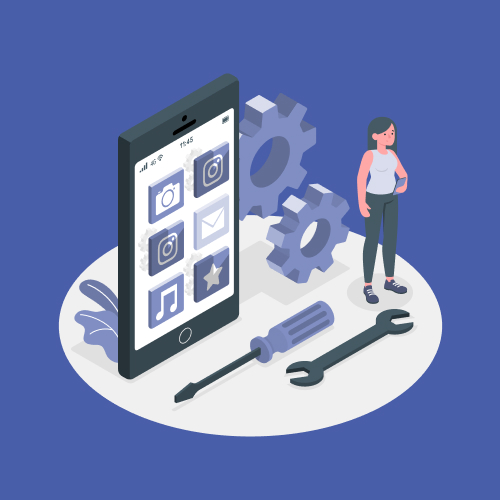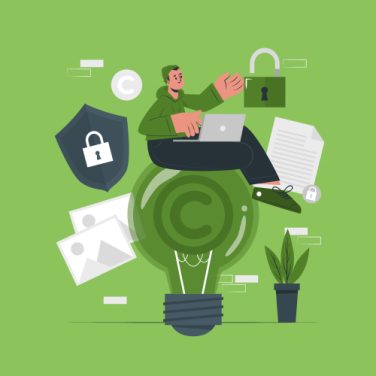The rise of HRMS Employee Self-Service signals a massive shift in HR operations.
Digital HR portals now let employees access personal data, submit leave requests, and update profiles in seconds. By adopting an intuitive HRMS portal with a streamlined HRMS login, HR teams free up hours of administrative work.
Empowered workers can manage their own records, track payslips, and make real-time adjustments, driving engagement and reducing errors. Integration with remote work tools ensures teams stay connected even outside the office, supporting hybrid and distributed models.
Overall, HRMS Employee Self-Service drives a modern HR ecosystem that balances autonomy and control for both HR professionals and staff.
In a remote or hybrid environment, HRMS self-service plays a pivotal role in maintaining productivity. Employees handle routine tasks on their own while HR professionals devote time to strategic initiatives. Adopting a secure HRMS portal with single sign-on and flexible dashboards enhances transparency. A well-implemented ESS portal underpins an agile HR strategy that scales with organisational needs and fosters continuous improvement.
The connection between ESS and employee experience extends beyond basic operations. Real-time data, automated approvals, and 24/7 HRMS login access remove blockers, enabling faster decision making. HR teams monitor usage patterns, gather feedback, and optimise the portal over time.
Investing in HRMS ESS yields measurable returns in reduced processing time and improved staff satisfaction.
ESS vs. traditional HR portals

HRMS ESS refers to a suite of tools embedded in an HRMS portal that lets employees manage routine HR tasks independently. Unlike traditional HR portals that require manual data entry and multiple approvals, ESS automates processes around the clock. A modern HRMS login grants secure access to a consolidated dashboard where users review personal records, submit requests, and view notifications in real time.
Traditional portals often suffer from limited functionality, outdated interfaces, and siloed workflows. They depend heavily on HR administrators to update data and route approvals. By contrast, ESS solutions incorporate self-service login, dynamic forms, and automated notifications that accelerate tasks. The user experience is designed for simplicity, reducing training time and support tickets.
Core components include:
- Self-serve login: Single sign-on (SSO) and password reset features for secure access.
- Profile updates: Employee-controlled personal and contact information editing.
- Leave and timesheet submissions: Online request forms with real-time balance tracking.
- Document management: Upload and retrieve employment documents, tax forms, and policies.
ESS portals integrate with payment and talent modules to sync payroll, benefits enrolment, and performance data. This connectivity ensures that changes in one module reflect across HRIS and talent management. By embedding ESS within a larger HCM suite, organisations create a unified ecosystem that streamlines administrative workflows and improves data accuracy across the board.
Benefits of ESS for businesses and employees
- Empowerment: Employees gain 24/7 visibility into personal records, payroll details, and benefits. This autonomy increases accountability and minimises support calls.
- Efficiency: Automated workflows reduce manual HR processing. Requests for leave, timesheets, and approvals complete in minutes instead of days.
- Accuracy: Direct entry by employees eliminates data transcription errors. Real-time validation and system checks maintain data integrity.
- Speed: Automated routing and notifications accelerate routine approvals. HR teams focus on strategic initiatives rather than form management.
- Engagement: Transparent access to information builds trust. Employees feel more connected to HR processes and organisational policies.
Adopting a modern ESS portal with a streamlined HRMS login enhances operational agility. HR departments see measurable time savings and reduced error rates. Employees experience a responsive digital workspace that supports hybrid and remote work models.
As organisations scale, the ESS framework adapts, allowing features like geolocation-based attendance tracking and AI-driven support. Ultimately, the combination of empowerment and automation delivers a competitive edge in talent management.
Key features of an effective ESS portal
| Feature | Description | Benefit | Product Mapping |
|---|---|---|---|
| User Dashboard | Central hub for profile info, document uploads, and announcements. | Reduces HR workload through clear navigation. | MiHCM’s ESS mobile portal |
| Leave Management | Online balance view, request submission, online approvals. | Improves data accuracy and speeds up approvals. | MiHCM Enterprise ESS modules |
| Timesheet & Attendance | Mobile clock-in/clock-out with geolocation tracking. | Enhances compliance and reduces manual entry. | Mobile Attendance Tracking with geolocation |
| Payslip Access | Secure, on-demand retrieval of payslips and tax forms. | Empowers employees with payroll transparency. | Easy Access to Payslips and Payroll Data |
| Workspace Reservation | Hybrid work calendar integration and seat booking. | Supports flexible work models and space utilisation. | MiHCM Lite booking feature |
| Secure Login & SSO | Password reset, single sign-on, multi-factor authentication. | Strengthens data security and user convenience. | Standard MiHCM security suite |
| AI-Driven Support | SmartAssist chat for instant answers and guided approvals. | Boosts adoption and reduces HR inquiries. | Trợ lý thông minh |
Implementation checklist and timeline
Rolling out an HRMS ESS portal requires careful planning and phased execution.
The following implementation checklist and timeline guide HR and IT teams through each critical stage, ensuring a smooth transition and timely delivery.
| Phase | Key Activities | Timeline |
|---|---|---|
| Phase 1: Requirements Gathering | Conduct stakeholder interviews, map processes, define user stories. | 2-6 weeks |
| Phase 2: System Design | Customise ESS portal layout, configure security, set up HRMS portal workflows. | 3-4 weeks |
| Phase 3: Integration | Connect ESS with HRIS, payroll, time and attendance systems. | 4-6 weeks |
| Phase 4: Testing | Perform user acceptance testing, data validation, security audits, HRMS login tests. | 2-3 weeks |
| Phase 5: Launch | Execute pilot rollout, gather feedback, expand access in waves. | 2-4 weeks |
| Phase 6: Post-Launch Support | Establish help desk, track issues, implement continuous improvement. | Ongoing |
During requirement gathering, engage HR managers, IT admins, and end users to capture needs accurately. Mapping existing workflows highlights gaps in traditional systems and informs ESS portal customisation. In the design phase, prioritise user experience by tailoring the HRMS portal dashboard, enabling efficient HRMS login, and embedding mobile ESS capabilities.
Integration with core HR modules ensures real-time data exchange between ESS, payroll, and talent management. Rigorous testing uncovers configuration errors, validates security protocols, and confirms geolocation attendance accuracy. Piloting with a small group allows rapid feedback loops, enabling teams to refine configurations before a full rollout.
After launch, set up a dedicated support channel to address user inquiries, monitor adoption metrics, and collect enhancement requests.
Continuous improvement cycles leverage analytics from MiHCM Data & AI to identify usage patterns and optimise workflows. Aligning the implementation with change management and training maximises user adoption and ensures the ESS portal delivers sustained value.
User training and change management

A successful ESS rollout hinges on comprehensive training and a robust change management strategy.
HR teams should prepare early, identifying communication channels and resources that guide employees through new processes.
Clear messaging, interactive learning, and ongoing support lay the foundation for high adoption and confidence with the ESS portal and HRMS login workflows.
Building a change management plan
- Communication Plan: Craft multi-channel announcements, email alerts, intranet banners, and FAQs to explain ESS benefits and login procedures.
- Role-Based Training: Offer live workshops, e-learning modules, quick reference guides, and video walkthroughs targeted to HR managers, supervisors, and end users.
- Change Champions: Identify enthusiastic employees across departments to promote ESS adoption, answer peer questions, and share best practices.
- Feedback Collection: Use surveys, focus groups, and support tickets to gather user feedback. Adjust training materials and portal features based on real-world usage.
- Refresher Sessions: Monitor adoption through login frequency and error reports. Provide periodic workshops and update guides when new features are released.
Incorporating an AI-driven assistant within the ESS portal further supports change management by offering on-demand help. Employees asking routine questions get immediate, contextual guidance without reaching out to HR. This reduces friction and builds trust in the self-service approach.
HR leaders should schedule regular check-ins with stakeholders to review adoption metrics, discuss pain points, and celebrate early successes. Document lessons learned and refine the plan for ongoing improvements.
By aligning training efforts with the phased implementation timeline, organisations ensure that employees feel confident using the HRMS portal and that administrators can address challenges proactively.
Measuring success: ESS KPIs and metrics
Measuring the impact of HRMS ESS requires tracking both usage and outcome metrics. Establishing clear Key Performance Indicators (KPIs) helps HR leaders monitor adoption, analyse trends, and demonstrate return on investment. Below are essential metrics to consider.
- Adoption Rate: Percentage of employees who have logged into the ESS portal at least once within a defined period. A high rate indicates successful engagement.
- Login Frequency: Average sessions per active user. Frequent logins suggest users rely on self-service for routine tasks.
- Request Processing Time: Reduction in time taken to complete leave applications, timesheets, and profile updates compared to baseline.
- Error Rate: Number of data correction incidents post-implementation. A lower rate signals improved data accuracy.
- User Satisfaction Score: Ratings collected through post-launch surveys and feedback forms, measuring ease of use and perceived value.
- Return on Investment (ROI): Cost savings from reduced HR workload and faster processing, weighed against implementation and maintenance expenses.
For accurate measurement, integrate ESS analytics with broader HR dashboards. Using MiHCM Analytics and Data & AI modules provides visual reports and trend analysis, making it easy to spot areas needing attention. Tracking metrics over time reveals adoption patterns, highlights training gaps, and informs feature enhancements.
Beyond raw numbers, case studies and testimonials offer qualitative insights. HR teams can showcase success stories where employees benefit from 24/7 HRMS login access to payslips or streamlined shift adjustments. Demonstrating both quantitative and qualitative results supports ongoing investment and continuous improvement of the ESS portal.
Common pitfalls to avoid during ESS rollout
Rolling out an ESS portal can yield great benefits, but avoiding common pitfalls is key to success. Below are frequent challenges and strategies to prevent them.
- Poor Stakeholder Engagement: Excluding HR, IT, or end users from planning leads to low adoption. Involve representatives early to gather requirements and gain buy-in.
- Inadequate Data Migration: Failing to validate and cleanse legacy data results in inaccuracies. Conduct thorough audits and pilot transfers before full migration.
- Underestimating Training Needs: Skipping role-based training causes user frustration. Develop targeted materials for different user groups and reinforce through hands-on sessions.
- Insufficient Integration Testing: Implementing ESS without end-to-end payroll and HRIS testing risks workflow breaks. Simulate real scenarios and review HRMS login processes carefully.
- Ignoring Feedback Loops: Launching without channels to capture user input prevents iteration. Establish help desks, support tickets, and regular surveys to drive enhancements.
Address these pitfalls by aligning the rollout with a robust implementation checklist and change management plan.
Next steps
A phased implementation, guided by a detailed checklist and timeline, ensures milestones are met on schedule. Integrating ESS with core HRIS and payroll modules, coupled with comprehensive training and a clear change management plan, drives higher adoption rates and sustained use. Measuring success via adoption metrics, process acceleration, and user feedback confirms ROI and highlights improvement areas.
Next steps include evaluating MiHCM products such as MiHCM Enterprise for advanced ESS capabilities, MiHCM Data & AI for insights, and SmartAssist for intelligent support. Start your ESS project today and transform HR operations into a self-service powerhouse that supports hybrid work and future growth.



